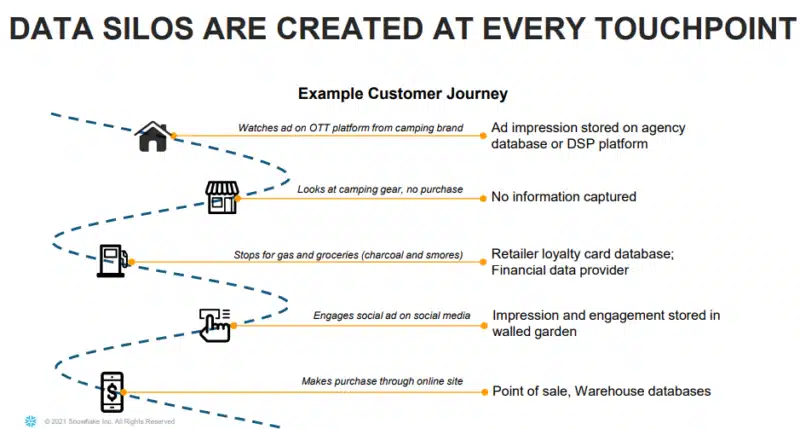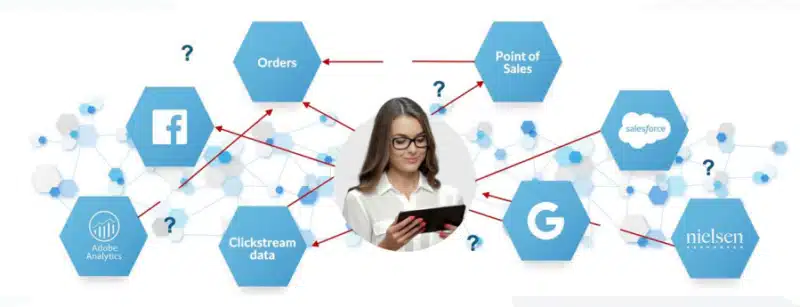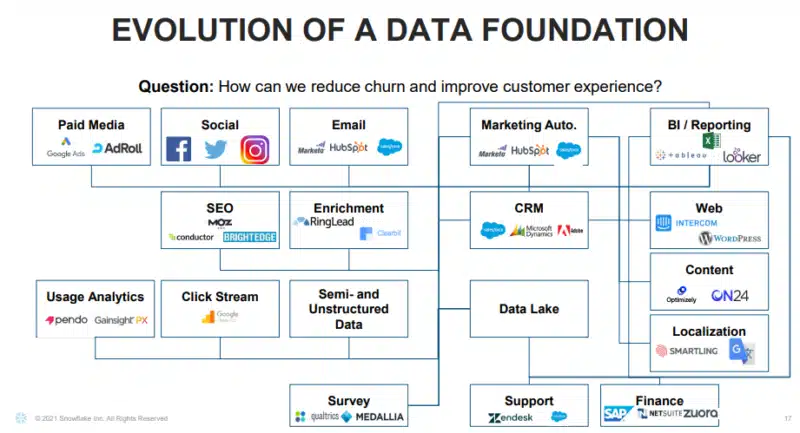How to overcome data silos and fragmentation
Marketers need robust solutions and strategies to overcome data fragmentation.
The sheer amount of customer data available to brands almost makes fragmentation inevitable. Even when using a CDP or DMP, marketers need robust solutions and strategies to overcome these issues.
“Each touchpoint is storing data about your customer about that customer journey,” said Ganesh Subramanian, Director of Product Marketing at Snowflake, at our MarTech conference. “That’s adding value to that customer journey, but each new SaaS technology that you’re leveraging along that journey is creating a new silo of data.”
He added, “We’re optimizing the customer journey in a micro sense, but each new optimization is creating a macro problem of a new siloed source of data that we need to bring together to get a holistic understanding of our customers.”

With so many data silos being created, marketers need to find ways to connect them all. That’s how data-driven marketers ensure their campaigns and targeting are effective and accurate.
Fragmented data has multiple root causes
“You have all these different disparate sources of data, and they’re hard to understand,” Subramanian said. “How do you attribute a dollar of marketing spend across channels?”
Fragmentation can occur for several reasons — it could be due to too much data in the pipeline, unstructured sets of data, or siloed data.

Part of the issue lies in the data collection platforms themselves and their issues with data unification. “That data foundation that you’re trying to leverage wasn’t built for that purpose,” says Subramanian.
Organized, connected data is necessary to gain any actionable insights and avoid waste. But some of the difficulty lies in extracting information from an ever-changing data foundation.
The evolution of a data foundation
“Many organizations start by looking for data to answer questions,” said Subramanian. “For instance, finding out how each channel contributes to the pipeline. A talented analyst might pull that data from paid media and email and tie that to marketing, automation, and CRM.”
But marketers will find themselves overwhelmed if their data foundation grows to be too large. The disparate pieces — paid media, social, marketing automation, reporting, and more — further silo that much-needed information and make attribution more difficult.

“All of a sudden this tech architecture is getting complex,” he said. “Then you bring in survey data, customer service, and finance data, and all of sudden this data foundation looks less like a strategy and more like a poor analyst in the backroom connecting the wires.”
He added, “This is where most organizations are. They have built some sort of tech architecture to solve a bunch of questions over time and it’s time to reassess.”
Positive marketing industry tailwinds
“The good news is that we do have many strong tailwinds,” said Subramanian. “There are some things that are coming up behind us that are helping organizations transform faster and more effectively now more than ever before.”
Here are some of the important factors working in marketers’ favor.
- Top marketers are becoming data-savvy;
- Marketing and IT are fostering closer partnerships; and
- Technology is catching up to (and passing) business needs.
It’s clear that the more marketing and technology teams work together to address these data fragmentation issues, the better-prepared brands will be for the future. Subramanian believes one of the best ways to begin this work using a marketing data cloud.
Leveraging a marketing data cloud
“The data cloud was purpose-built for this problem like this,” Subramanian said. “It is the next evolution of how data is being leveraged across organizations. Being able to store all your data in one place and leverage it without managing complex pipelines and many copies of data — this is the promise of the data cloud.”

Subramanian shared an illustration of his own organization’s marketing cloud (shown above), which connects many organizations and their data in a central hub. In this ecosystem, companies can share data about customers, finances, suppliers, partners, COVID-19, and other business units.
“It could be an agency sharing data back to a brand about the results of a current campaign,” he said. “It could also be a SaaS vendor that you’re using in your customer journey, and rather than having to pipe data back and forth to your CRM, you’re opening a data share between that fast technology snowflake and the rest of your marketing ecosystem.”
He added, “So the data cloud is very much alive in data sharing, and it’s being leveraged today. Marketers are no longer having to think about all those workarounds and those data marts that organizations had to build to overcome those silos in prior eras.”
Watch the full presentation from our MarTech conference below.
Contributing authors are invited to create content for MarTech and are chosen for their expertise and contribution to the search community. Our contributors work under the oversight of the editorial staff and contributions are checked for quality and relevance to our readers. MarTech is owned by Semrush. Contributor was not asked to make any direct or indirect mentions of Semrush. The opinions they express are their own.
Related stories